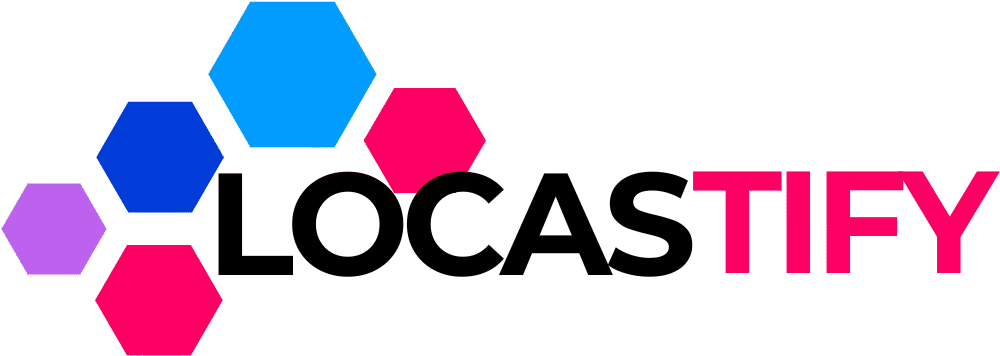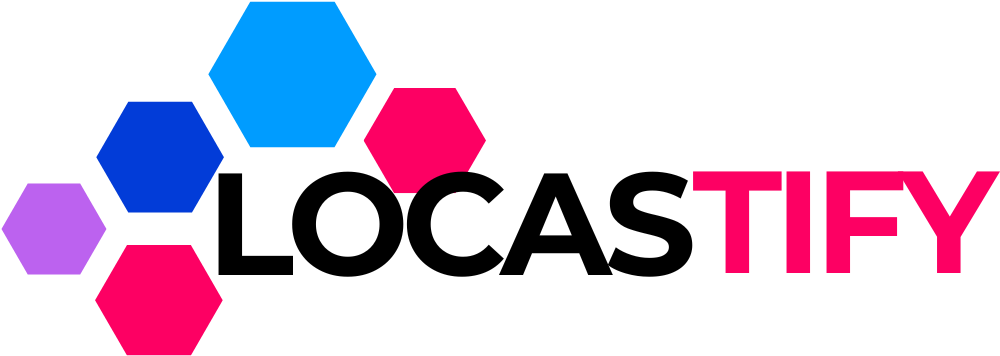Mental health has moved from the shadows into the spotlight. What was once stigmatized or ignored is now one of the most pressing global health priorities. According to the World Health Organization, depression affects over 280 million people worldwide, and anxiety disorders are rising rapidly—especially in the wake of the pandemic.
By 2025, new technologies, therapies, and global policies are redefining how we approach mental wellness. The goal isn’t just to treat disorders but to promote resilience, prevent burnout, and integrate mental health into daily life.
In this post, we’ll explore the top 10 mental health trends and innovations of 2025, with a focus on technology, healthcare, and social change. Whether you’re a health professional, policymaker, or someone curious about your own wellness journey, these insights can help you understand where mental health care is heading.

1. AI-Powered Mental Health Tools
Artificial intelligence is no longer futuristic—it’s already transforming mental healthcare delivery.
Key Innovations in 2025
- AI Chatbots & Virtual Therapists: Platforms like Woebot and Wysa provide 24/7 conversational support. They’re designed to recognize mood shifts and offer evidence-based interventions like CBT (cognitive behavioral therapy).
- Predictive Analytics: Advanced AI can now detect early symptoms of depression, anxiety, or even suicidal ideation by analyzing speech patterns, typing habits, and wearable data.
- Treatment Personalization: AI compares millions of data points from patient histories to recommend the most effective therapies, medications, or even lifestyle changes.
Why It Matters
Millions of people still lack access to licensed therapists. AI bridges that gap, offering low-cost, instant support while flagging high-risk cases for human professionals.
👉 Case Study: In the UK, an NHS pilot program using AI-powered mental health triage reduced wait times for therapy by 30%, helping patients access care faster.
2. Virtual Reality (VR) Therapy
VR isn’t just for gaming anymore—it’s a proven therapeutic tool.
Applications in 2025
- Phobia & PTSD Treatment: Patients can face their fears in safe, controlled environments. For example, a war veteran with PTSD might walk through a VR-simulated scenario while a therapist guides them.
- Stress Relief & Mindfulness: Guided VR meditation apps transport users to calming environments like beaches or forests, reducing cortisol levels.
- Addiction Recovery: VR exposure helps patients practice coping mechanisms when faced with simulated triggers like a bar or social setting.
Why It Matters
Traditional exposure therapy can be expensive or impractical. VR therapy makes it scalable, immersive, and effective.
👉 Example: A 2024 Stanford Medicine study found VR therapy for social anxiety reduced symptoms by over 45% in just 8 weeks.
3. Psychedelic-Assisted Therapy
Once stigmatized, psychedelics are now at the frontier of evidence-based mental health care.
What’s New in 2025
- FDA Approvals: Psilocybin and MDMA are now approved for use in clinical settings for depression and PTSD.
- Ketamine Clinics: More accessible than ever, ketamine therapy is being used for treatment-resistant depression.
- Integration Therapy: After psychedelic sessions, patients work with trained therapists to process insights and apply them in daily life.
Why It Matters
Psychedelics are showing success where traditional medications fail. Patients with long-term, treatment-resistant depression are reporting significant improvements in well-being after guided sessions.
👉 Case Study: A Johns Hopkins trial found psilocybin therapy led to 70% sustained remission rates for depression—far higher than conventional antidepressants.
4. Digital Therapeutics (DTx)
Not all mental health apps are created equal. Digital therapeutics (DTx) are clinically validated, often FDA-approved software treatments.
Features in 2025
- App-Based Therapy Programs: Apps like reSET-O (for opioid addiction) are prescribed by doctors and monitored for outcomes.
- Remote Monitoring: Providers can track patient progress in real-time.
- Insurance Coverage: Many health insurers now cover DTx just like medications or therapy visits.
Why It Matters
Unlike generic wellness apps, DTx solutions are backed by clinical trials and strict regulations. They combine convenience with proven effectiveness.
👉 Stat: The global digital therapeutics market is projected to reach $20 billion by 2030, with mental health apps driving growth.
5. Wearables for Mental Health Tracking
From step counters to mental health monitors, wearables are smarter in 2025.
Advances This Year
- Biometric Stress Tracking: Devices measure cortisol through sweat sensors, heart rate variability, and sleep cycles.
- Mood Detection: Smartwatches alert users to rising anxiety or depressive patterns.
- Workplace Data: Employers use anonymized reports to design wellness programs.
Why It Matters
Wearables empower early intervention. Instead of waiting for a crisis, users and clinicians can track mental health in real time.
👉 Example: Apple Watch’s 2024 update introduced mood journaling and stress prediction features, making it one of the most used mental health wearables globally.

6. Holistic and Integrative Approaches
In 2025, the medical community increasingly embraces mind-body connections.
Popular Practices
- Yoga, Meditation & Breathwork: These are now commonly prescribed alongside medications.
- Nutritional Psychiatry: Gut health research confirms that diet affects mood, with probiotics and omega-3s often recommended.
- Sleep Optimization: Personalized sleep coaching apps are integrated into healthcare plans.
Why It Matters
Holistic care addresses root causes, not just symptoms. Patients see mental wellness as a lifestyle, not just a clinical intervention.
👉 Stat: According to the American Psychological Association, over 65% of US therapists in 2025 recommend integrative practices in treatment plans.
7. Workplace Mental Health Revolution
Workplace culture has shifted dramatically in 2025.
Emerging Practices
- Four-Day Work Week: Adopted by companies to reduce stress and boost productivity.
- Employer-Sponsored Therapy: Free or subsidized mental health sessions are becoming standard.
- AI Workload Balancing: Tools manage schedules to prevent burnout.
Why It Matters
Burnout is a major cause of turnover and reduced productivity. Companies now see mental health not as a perk, but a business necessity.
👉 Example: Microsoft’s European offices reported a 25% drop in employee burnout after introducing a four-day week pilot.
8. Culturally Inclusive and Personalized Care
Diversity and equity are front and center in mental health care.
Innovations
- Cultural Competence Training: Therapists learn how cultural backgrounds affect mental health perceptions.
- Multilingual Therapy Platforms: AI-powered translation allows therapy in multiple languages.
- Community-Based Models: Local leaders integrate modern therapy with traditional practices.
Why It Matters
Personalized, culturally sensitive therapy reduces stigma and increases engagement—especially in underserved communities.
👉 Stat: A 2024 report by Mental Health America found culturally matched therapy improved treatment adherence by 40%.
9. Youth and Adolescent Mental Health Innovations
Young people face rising rates of anxiety, depression, and self-harm.
What’s Changing in 2025
- School-Based Screenings: AI tools detect early signs of mental distress in classrooms.
- Gamified Therapy Apps: Interactive apps teach coping skills in fun, engaging ways.
- Parental Education Tools: Apps guide parents on how to support children’s emotional needs.
Why It Matters
Half of all mental health disorders begin before age 14. Early detection can save lives.
👉 Example: Finland’s nationwide school mental health program cut teen suicide rates by 20% in 3 years.
10. Global Policy and Mental Health Equity
Mental health is now a global policy priority.
2025 Highlights
- WHO’s Global Action Plan: Expanding mental health services in low- and middle-income countries.
- Insurance Mandates: More countries require mental health coverage equal to physical health.
- Low-Cost Community Clinics: Governments invest in local care centers with both digital and in-person support.
Why It Matters
Mental health should not be a privilege. These initiatives aim to close the global care gap where millions lack access.
👉 Stat: WHO reports that by 2025, 80% of countries have updated mental health policies, compared to just 60% in 2018.
Quick Reference Table: Top 10 Mental Health Innovations
| Trend | Innovation | Impact |
| AI-Powered Tools | Chatbots, predictive analytics | Early detection & accessibility |
| VR Therapy | Immersive phobia/PTSD treatment | Mainstream adoption |
| Psychedelic-Assisted Therapy | Psilocybin, ketamine, MDMA | Treatment-resistant depression/PTSD |
| Digital Therapeutics | FDA-approved apps | Evidence-based remote care |
| Wearables | Mood/stress tracking | Preventive monitoring |
| Holistic Care | Nutrition, yoga, sleep therapy | Whole-person wellness |
| Workplace Wellness | 4-day weeks, AI workload balancing | Reduced burnout, higher retention |
| Inclusive Care | Cultural competence & translation tools | Greater access and equity |
| Youth Innovations | Gamified therapy, school screenings | Early intervention |
| Global Policy | WHO plans, insurance mandates | Closing treatment gap |

Conclusion
The mental health landscape in 2025 is evolving rapidly. From AI chatbots and VR therapy to psychedelics and global equity policies, innovations are transforming care into something more personalized, inclusive, and proactive.
The shift is clear: mental health is no longer just about treating illness. It’s about building resilience, preventing crises, and making care universally accessible.
FAQs:
1. What is the biggest mental health innovation in 2025?
One of the biggest innovations is the rise of AI-powered mental health tools. These provide instant, affordable support through chatbots, predictive analytics, and personalized therapy recommendations, making care more accessible worldwide.
2. Are psychedelic therapies really safe and effective?
Yes, when administered in controlled clinical settings by trained professionals, psychedelic-assisted therapies like psilocybin and MDMA have shown significant success in treating depression, PTSD, and anxiety. However, they are not suitable for everyone and should never be self-administered.
3. How do wearables help with mental health?
Wearables like smartwatches can now track stress, sleep quality, heart rate variability, and mood patterns. This data helps users and healthcare providers detect early warning signs and intervene before symptoms worsen.
4. How is the workplace addressing mental health in 2025?
Companies are adopting policies like the four-day workweek, offering free or subsidized therapy sessions, and using AI-driven workload management tools. The focus is on reducing burnout and improving overall employee well-being.
5. Why is cultural inclusivity important in mental health care?
Mental health treatment must consider cultural beliefs, traditions, and language differences. Culturally inclusive care ensures therapy is personalized, respectful, and effective, making patients more likely to seek and continue treatment.

